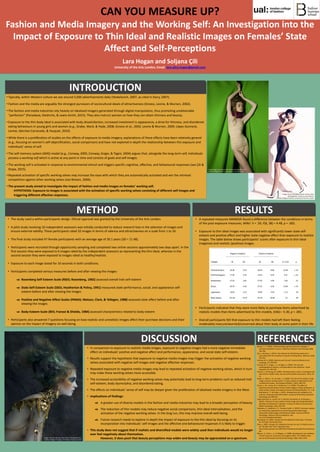A study examined the effects of exposure to thin ideal vs realistic images on female participants. 47 females viewed 6 thin ideal images in one session and 6 realistic images in another session. Measures assessed self-esteem, affect, and body esteem before and after. Results showed that after thin ideal images, participants had lower self-esteem and positive affect and higher negative affect compared to after realistic images. Participants also reported being more likely to purchase items modeled by realistic figures. The findings suggest that exposure to thin ideals activates negative self-views and affect.
